Welcome to your source for designer Israeli Jewelry and Gifts. Buy and enjoy your chic and special jewels from the comfort of your home or mobile.
Welcome to our new site: https://sterlingsilverjewel.com
About the Kibbutz in Israel
Israeli Jewelry - Israel Gifts
The Kibbutz in Israel
The kibbutz (Hebrew word for “communal settlement”) is a unique rural community; a society dedicated to mutual aid and social justice; a socioeconomic system based on the principle of joint ownership of property, equality and cooperation of production, consumption and education; the fulfillment of the idea “from each according to his ability, to each according to his needs”; a home for those who have chosen it.
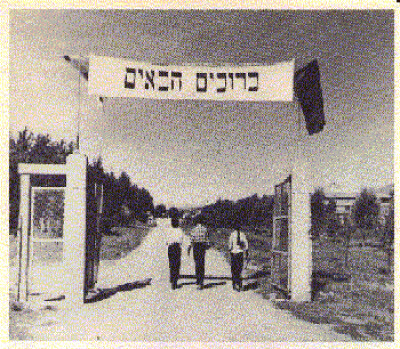
The first kibbutzim (plural of “kibbutz”) were founded some 40 years before the establishment of the State of Israel (1948). Degania (from the Hebrew “dagan,” meaning grain), located south of Lake Kinneret, was established in 1909 by a group of pioneers on land acquired by the Jewish National Fund. Their founders were young Jewish pioneers, mainly from Eastern Europe, who came not only to reclaim the soil of their ancient homeland, but also to forge a new way of life.

Their path was not easy: a hostile environment, inexperience with physical labor, a lack of agricultural know-how, desolate land neglected for centuries, scarcity of water and a shortage of funds were among the difficulties confronting them. Overcoming many hardships, they succeeded in developing thriving communities which have played a dominant role in the establishment and building of the state.
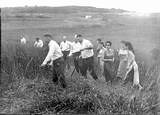
Today some 270 kibbutzim, with memberships ranging from 40 to more than 1,000, are scattered throughout the country. Most of them have between 300 and 400 adult members, and a population of 500-600.
The number of people living in kibbutzim totals approximately 130,000, about 2.5 percent of the country's population. Most kibbutzim belong to one of three national kibbutz movements, each identified with a particular ideology.
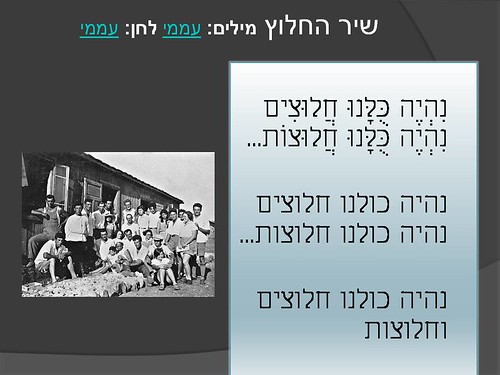
History of the Kibbutz
Pogroms, or riots directed towards a certain group of the population, flared up once again in Russia in the first years of the 20th century. In 1903 at Kishinev peasant mobs were incited against Jews after a blood libel. Riots again took place in the wake of Russia's defeat in the Russo-Japanese War and the 1905 Revolution. The occurrence of new pogroms inspired yet another wave of Russian Jews to emigrate. As in the 1880s, most emigrants went to the United States, but a minority went to Palestine. It was this generation that would include founders of the kibbutzim.
Like the members of the First Aliya who came before them, most members of the Second Aliya wanted to be farmers in the Trans-Jordan. Those who would go on to found the kibbutzim first went to a village of the Biluim, Rishon LeZion, to find work there. The founders of the kibbutz were morally appalled by what they saw in the Jewish settlers there "with their Jewish overseers, Arab peasant laborers, and Bedouin guards." They saw the new villages and were reminded of the places they had left in Eastern Europe. Instead of the beginning of a pure Jewish commonwealth, they felt that what they saw recreated the Jewish socioeconomic structure of the Pale of Settlement, where Jews functioned in clean jobs, while other groups did the dirty work.
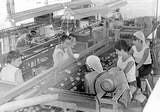
Ottoman Palestine was a harsh environment, quite unlike the Russian plains the Jewish immigrants were familiar with. The Galilee was swampy, the Judean Hills rocky, and the South of the country, the Negev, was a desert. To make things more challenging, most of the settlers had no prior farming experience. The sanitary conditions were also poor. Malaria was more than a risk, it was nearly a guarantee. Along with malaria, there were typhus and cholera.
In addition to having a difficult climate and relatively infertile soils, Ottoman Palestine was in some ways a lawless place. Nomadic Bedouins would frequently raid farms and settled areas. Sabotage of irrigation canals and burning of crops were also common. Living collectively was simply the most logical way to be secure in an unwelcoming land.
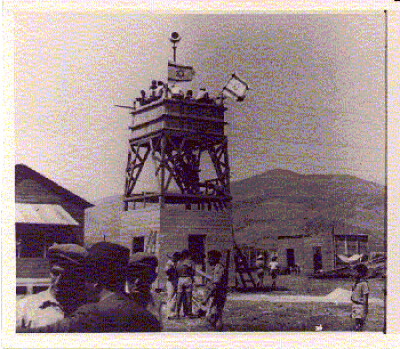
On top of considerations of safety, there were also those of economic survival. Establishing a new farm in the area was a capital-intensive project; collectively the founders of the kibbutzim had the resources to establish something lasting, while independently they did not.
Finally, the land that was going to be settled by the settlers had been purchased by the greater Jewish community. From around the world, Jews dropped coins into JNF "Blue Boxes" for land purchases in Palestine. Since these efforts were on behalf of all Jews in the area, it would not have made sense for their land purchases to be conveyed to individuals.
In 1909, Baratz, nine other men, and two women established themselves at the southern end of the Sea of Galilee near an Arab village called "Umm Juni." These teenagers had hitherto worked as day laborers draining swamps, as masons, or as hands at the older Jewish settlements. Their dream was now to work for themselves, building up the land. They called their community "Kvutzat Degania", after the cereals which they grew there. Their community would grow into the first kibbutz.

The founders of Degania worked backbreaking labor attempting to rebuild what they saw as their ancestral land and to spread the social revolution. One pioneer later said "the body is crushed, the legs fail, the head hurts, the sun burns and weakens." At times half of the kibbutz members could not report for work. Many young men and women left the kibbutz for easier lives in Jewish Trans-Jordan cities or in the Diaspora.
Despite the difficulties, by 1914, Degania had fifty members. Other kibbutzim were founded around the Sea of Galilee and the nearby Jezreel Valley. The founders of Degania themselves soon left Degania to become apostles of agriculture and socialism for newer kibbutzim.
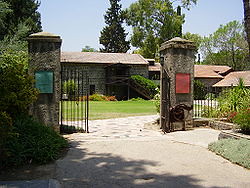
The fall of the Ottoman Empire at the end of World War I, followed by the arrival of the British, brought with it benefits for the Jewish community of Palestine and its kibbutzim. The Ottoman authorities had made immigration to Palestine difficult and restricted land purchases. Rising anti-semitism forced many Jews to flee Eastern Europe. To escape the pogroms, tens of thousands of Russian Jews immigrated to Palestine in the early 1920s, in a wave of immigration that was called the "Third Aliya."
After the Bolshevik consolidation of power, Jews of Russia and Ukraine could not emigrate. In the rest of the 1920s Jewish immigrants to Palestine would come from the rest of Eastern and Central Europe, the "Fourth Aliya." These Third and Fourth Aliya immigrants would actually do more for the growth of the kibbutz movement than the immigrants of previous immigration groups.
Partly based on German youth movements and the Boy Scouts, Zionist Jewish youth movements flourished in the 1920s in virtually every European nation. Youth movements came in every shade of the political spectrum. Most of these Zionist youth movements were socialist such as Dror, Brit Haolim, Kadima, Habonim (now Habonim Dror), and Wekleute. Of the leftist youth movements the most significant in kibbutz history was to be the Marxist Hashomer Hatzair. In the 1920s the left-oriented youth movements would become feeders for the kibbutzim.
In contrast to those who came as part of the Second Aliya, these youth group members had some agricultural training before embarking. Members of the Second Aliya and Third Aliyas were also less likely to be Russian, since emigration from Russia was closed off after the Russian Revolution of 1917. European Jews who settled on kibbutzim between the World Wars were from other countries in Eastern Europe, including Germany. Finally, the members of the Third Aliya were to the left of the founders of Degania, and believed that voluntary socialism could work for everyone. They considered themselves to be a vanguard movement that would inspire the rest of the world.
Kibbutz The Gevatron songs
Degania in the 1910s seems to have confined its discussions to practical matters, but the conversations of the next generation in the 1920s and 1930s were free-flowing discussions of the cosmos. Instead of having a meeting in a dining room, meetings were held around campfires. Instead of beginning a meeting with a reading of minutes, a meeting would begin with a group dance.
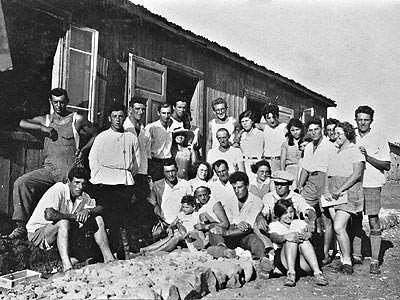 Remembering her youth on a kibbutz by the Sea of Galilee, a woman remembered "Oh, how beautiful it was when we all took part in the discussions, [they were] nights of searching for one another—that is what I call those hallowed nights. During the moments of silence, it seemed to me that from each heart a spark would burst forth, and the sparks would unite in one great flame penetrating the heavens…. At the center of our camp a fire burns, and under the weight of the hora the earth groans a rhythmic groan, accompanied by wild songs."
Remembering her youth on a kibbutz by the Sea of Galilee, a woman remembered "Oh, how beautiful it was when we all took part in the discussions, [they were] nights of searching for one another—that is what I call those hallowed nights. During the moments of silence, it seemed to me that from each heart a spark would burst forth, and the sparks would unite in one great flame penetrating the heavens…. At the center of our camp a fire burns, and under the weight of the hora the earth groans a rhythmic groan, accompanied by wild songs." Kibbutzim founded in the 1920s tended to be larger than the kibbutzim like Degania which were founded prior to World War I. Degania had had twelve members at its founding. Ein Harod, founded only a decade later, began with 215 members.
Altogether kibbutzim grew and flourished in the 1930s and 1940s. In 1922 there were scarcely 700 individuals living on kibbutzim in Palestine. By 1927 the kibbutz population was approaching 2,000. By the eve of World War II the kibbutz population was 25,000, 5% of the total population of the yishuv, while in 1950 they grew up to 65,000, 7.5% of the population.
With a changing of the generations in the kibbutzim societies, several wide changes occurred in the structure and culture of the kibbutzim. In general, the process could be described in which a significantly weakening happened to the different communal characteristic.
With time, the kibbutz members’ sense of identification with the kibbutz and its goals significantly decreased. This process originated both from personal frustrations among the kibbutz members which development as a result of internal processes which happened in the kibbutz, and from the growing stratification and inequality of kibbutz society because of the capitalistic cultures of inter-kibbutz organizations headed by kibbutz elite members and capitalistic cultures adopted by many kibbutz factory managers who followed the lead of the former elite.
In addition, over the years some of the kibbutz members made professional careers outside the kibbutz and followed the norms of capitalist society and much like the two former elites also accumulated power, privileges, prestige and other capitals by which some of them or the former elites ruled over the kibbutzim and made their democracy largely ineffective As part of this process, remoteness was created between the individual and basic values of the kibbutz. This weakening resulted in the breach of the balance which existed between the individual values and the values of the kibbutz. This gap was reflected also in with motivation problems at work.
Handmade textile products from the Kibbutz
The work motivational methods of the Kibbutzim changed, and an emphasis was placed on the creation of various social compensations to urge the workers to continue their work, instead of accepting the concept of canceling work. These processes occurred in parallel with several severe economic crises, which included, among other things, a decrease in the incomes and a severe banking crisis which later was named “the kibbutzim crises”.
There are several reasons for the weakening of the linkage between the kibbutz members' to the kibbutz:
* The privatization processes and the adoption of non-cooperative beliefs in all of the Israeli society, affected the moral and structural support of kibbutzim, and with the years penetrated the new generations of the kibbutzim. * The kibbutzim were built on the attempt to create a permanent and institutionalized framework, which would be able to set a pattern of conduct which would successfully handle the implementation of shared values. The attempt to place such a regular pattern required creativity in the adoption of kibbutz practices to its growth and changing kibbutz system and encompassing society, but kibbutz leadership suppressed innovators and critical thinkers, causing either failures to deal with changes or adoption of capitalist solutions that negated kibbutz basic principles. * The kibbutzim had a rural patterns of settlements, while over the years the Israeli society began adopting urban patterns of settlements. The lack of match between the patterns of the kibbutz society and the majority of the Israeli society, appealed the strong linkage between the kibbutzim with the entire Israeli society, a principle which didn’t allow the continuation of the collaborative model (because of the internal weakening and the loss of the all-Israeli legitimacy). * The kibbutzim were established during the pioneer period and were the fulfillment of the Zionist vision, during that period of time every member was required to give the maximum from himself for the good of the collective: the kibbutz and the state. In addition, as a group it was easier to deal with the common problems of the individuals – which allowed the recruitment of a large number of people for maintaining the safety of the community at that time, and therefore this way of life was suited for the Zionist goals more than other forms of life at that time. * The original concept of the kibbutzim was based to a large extent on self-sacrifice of its members for the sake of abstract foundations and not on the cancellation of work, and therefore after the pioneer period the linkage between the kibbutz members decreased, due to the decline in the pioneering spirit and the decline in the importance of the self-sacrifice values. * When the kibbutz was perceived as an initiator for values national objectives, it was very much appreciated in the Israeli society and it was easier for the members to identify themselves with the kibbutz, its function and it’s significantly. With the decrease of its appreciation and the minimizing of the social significances in the Israeli society, the kibbutz identity weakened. * The kibbutzim weren't capable of dealing with the increase in the standard of living in order to keep the communal values relevant, which eventually led to the changes in patterns of life of many members which harmed the relevancy of the communal framework which was not adapted to this. * The globalization processes and the kibbutz failure to block them exposed the kibbutz society to a different type of culture. For example, after kibbutz members were allowed to have Television sets in their own homes, the kibbutz members were exposed to “the good life” in which people were compensated for their work and could buy themselves different luxurious items. The kibbutzim weren't capable of dealing with these processes. * The fall of the Soviet Union resulted in the weakening of Socialist beliefs around the world, including in the kibbutz society. This process was followed by the capitalist system which became stronger and started spreading and the when the United States became the sole superpower, as well as a media exposure to the totalitarian characteristics of Joseph Stalin's regime, and the violent large scaled tyranny and oppression manifestations which followed it.
Since the mid 1990s, the number of kibbutzim making significant changes in their lifestyle continued to grow, while the resistance to these changes gradually decreased, with only a few dozen kibbutzim still functioning under more traditional models. It is important to note, however, that each kibbutz has undergone different processes of change. There are many people, outside and inside the kibbutzim, who claim these changes bring to an end the kibbutz concept.
Ideology of the kibbutz movement
First Aliyah immigrants were largely religious, but those of the Second Aliyah were mainly secular. A Jewish work ethic thus replaced religious practice. Berl Katznelson, a Labor Zionist leader articulated this when he said "Everywhere the Jewish laborer goes, the divine presence goes with him.".
In addition to redeeming the Jewish nation through work, there was also an element of redeeming Eretz Yisrael - Palestine - in the kibbutz ideology. In the contemporary Yiddish anti-Zionist literature that was circulating around Eastern Europe, Palestine was mocked as dos gepeigerte land, "the country that had died." Kibbutz members found immense gratification in bringing the land back to life by planting trees, draining swamps, and countless other hard-graft activities to make the land (invariably wetlands) productive. In soliciting donations, kibbutzim and other Zionist settlement activities presented themselves as "making the desert bloom."
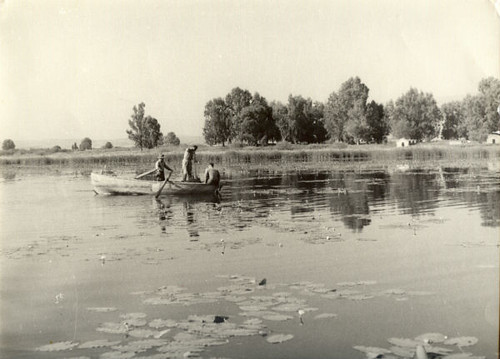
Most kibbutzim were founded upon disputed land. Like most other Jewish agricultural communities, kibbutzim were founded in three relatively small, flat, low-lying regions of the country, the upper Jordan Valley, the Jezreel Valley and the Sharon coastal plain. The land was marshy and highly fertile, but available for purchase because it was infested with malaria and thus unproductive. Most early kibbutzniks, including David ben Gurion himself, suffered from malaria. In areas of higher elevation without standing water, where mosquitos could not breed—such as the area now called the West Bank—there were few if any kibbutzim.
Members of a kibbutz, or kibbutzniks, like other participants in the Zionist movement, had not considered the possibility of conflict between Jews and Arabs over Palestine. Mainstream Zionists predicted the Arab population would be grateful for the economic benefits that the Jews would bring. The left wing of the kibbutz movement believed that the enemies of the Arab peasants were Arab landowners (called effendis), not fellow Jewish farmers. By the late 1930s as the struggle against world fascism and for a political refuge for persecuted Jews began, kibbutzniks began to assume a military role in the New Yishuv.
The first kibbutzniks hoped to be more than plain farmers in Palestine. They even hoped for more than a Jewish homeland there: they wanted to create a new type of society where all would be equal and free from exploitation. The early kibbutzniks wanted to be both free from working for others and from the guilt of exploiting hired work. Thus was born the idea that Jews would band together, holding their property in common, "from each according to his ability, to each according to his needs."
Although kibbutzniks practiced a form of communism themselves, they did not believe that it could work for everyone; for example, the Kibbutz political parties never called for the abolition of private property. Kibbutzniks saw their kibbutzim as collective enterprises within a free market system. Kibbutzim also practise active democracy in organisation: periodic elections are held for Kibbutz functions as well as an active participation in national elections.
The principle of equality was taken extremely seriously up until the 1970s. Kibbutzniks did not individually own tools, or even clothing. Gifts and income received from outside were turned over to the common treasury. If a member received a gift in services—like a visit to a relative who was a dentist or a trip abroad paid for by a parent—there could be arguments at members' meetings about the propriety of accepting such a gift.
Children
The arrival of children at a new kibbutz inevitably posed an ethical dilemma. If everything was held in common, then who was in charge of the children? This question was answered by regarding the children as belonging to all, even to the point of kibbutz mothers breastfeeding babies which were not their own. For most kibbutzim, the arrival of children was a sobering experience: "When we saw our first children in the playpen, hitting one another, or grabbing toys just for themselves, we were overcome with anxiety. What did it mean that even an education in communal life couldn't uproot these egotistical tendencies? The utopia of our initial social conception was slowly, slowly destroyed."
In the 1920s kibbutzim began a practice of raising children communally away from their parents in special communities called "Children's Societies" (Mossad Hinuchi). The theory was that trained nurses and teachers would be better care-providers than amateur (and busy) parents. Children and parents would have better relationships due to the Children's Societies, since parents would not have to be disciplinarians. Also, it was hoped that raising children away from parents would liberate mothers from their "biological tragedy." Instead of spending hours a day raising children, women could thus be free to work or enjoy leisure.
Social life

Social lives were held in common as well, not only property. As an example, most kibbutz dining halls exclusively utilized benches, not as an issue of cost or convenience, but because benches were construed as another way of expressing communal values. At some kibbutzim husbands and wives were discouraged from sitting together, as marriage was an expressed form of exclusivity.
Unsurprisingly, the exclusively communal life proved hard for some. Every kibbutz saw new members quit after a few years. Since kibbutzniks had no individual bank accounts, any purchase not made at the kibbutz canteen had to be approved by a committee, a potentially humiliating and time-wasting experience. Kibbutzim also had their share of members who were not hard workers, or who abused common property; there would always be resentment against these "parasites."
Although major decisions about the future of the kibbutz were made by consensus or by voting, day-to-day decisions about where people would work were made by elected leaders.
Kibbutz memoirs from the Pioneer era report that kibbutz meetings varied from heated arguments to free-flowing philosophical discussions, whereas memoirs and accounts from kibbutz observers from the 1950s and 1960s report that kibbutz meetings were businesslike but poorly attended.
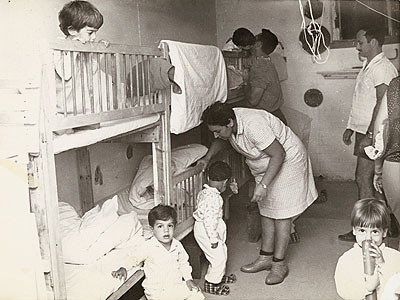 Children's Societies were one of the features of kibbutz life that most interested outsiders. In the heyday of Children's Societies, parents would only spend two hours a day, typically in the afternoon, with their children. In Kibbutz Artzi parents were explicitly forbidden to put their children to bed at night. As children got older, parents could go for days on end without seeing their offspring, other than through chance encounters somewhere in the grounds.
Children's Societies were one of the features of kibbutz life that most interested outsiders. In the heyday of Children's Societies, parents would only spend two hours a day, typically in the afternoon, with their children. In Kibbutz Artzi parents were explicitly forbidden to put their children to bed at night. As children got older, parents could go for days on end without seeing their offspring, other than through chance encounters somewhere in the grounds.
Some children who went through Children's Societies said they loved the experience, others remain ambivalent. One vocal group maintains that growing up without one's parents was very difficult. Years later, a kibbutz member described her childhood in a Children's Society:
"Allowed to suckle every four hours, left to cry and develop our lungs, we grew up without the basic security needed for survival. Sitting on the potty at regular intervals next to other children doing the same, we were educated to be the same; but we were, for all that, different… At night the grownups leave and turn off all the lights. You know you will wet the bed because it is too frightening to go to the lavatory."
From the beginning, Kibbutzim had a reputation as culture-friendly and nurturing of the arts. Many kibbutzniks were and are writers, actors, or artists. Kibbutzim typically offer theater companies, choirs, orchestras, athletic leagues, and special-interest classes.
As kibbutzim branched out into manufacturing in the 1960s, they are branching out into tourism and services today. Kibbutz Hatzerim even has a law firm, as well as Nahsholim. Virtually every kibbutz has guest rooms for rent. Some of these rooms are intended for traveling students, but Kiryat Anavim has a luxury hotel. Several kibbutzim, such as Kibbutz Lotan and Kfar Ruppin, operate bird-watching vacations. They say that a European visitor can see more birds in one week in Israel than he or she would in a year at home . It is not lost on the modern kibbutz movement that kibbutzniks today are working in occupations which the first kibbutz generation condemned.
Today, most kibbutzim are at the economic break-even point, a dozen or so are very wealthy, and several score lose money. Many people who live on kibbutzim have to work outside the kibbutz. They are expected to return a percentage of their earnings to the collective.
Making the Desert Bloom
For the founders, tilling the soil of their ancient homeland and transforming city dwellers into farmers was an ideology, not just a way to earn a livelihood. Over the years, kibbutz farmers made barren lands bloom, with field crops, orchards, poultry, dairy and fish farming, and-more recently-organic agriculture becoming the mainstays of their economy.
Through a combination of hard work and advanced farming methods, they achieved remarkable results, accounting for a large percentage of Israel's agricultural output to this day.
Production activities of the kibbutzim are organized in several autonomous branches. While most of them are still in agriculture, today virtually all kibbutzim have also expanded into various kinds of industry.
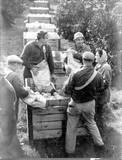
Although manufacturing a wide range of products, from fashion clothing to irrigation systems, the majority of kibbutz industry is concentrated in three main branches: metal work, plastics and processed foods. Most industrial facilities are rather small, with less than a hundred workers.
In many areas, kibbutzim have pooled their resources, establishing regional enterprises such as cotton gins and poultry-packing plants, as well as providing a gamut of services ranging from computer data compilation to joint purchasing and marketing. The contribution of the kibbutzim to the country's production, both in agriculture (33 percent of farm produce) and in industry (6.3 percent of manufactured goods) is far greater than their share of the population (2.5 percent). In recent years, increasing numbers of kibbutzim have become centers for tourism, with recreational facilities such as guest houses, swimming pools, horseback riding, tennis courts, museums, exotic animal farms and water parks for Israelis and foreign visitors alike.
Raising Children
Unlike former times when they lived in communal children's houses, children in the majority of kibbutzim today sleep at their parents' home until they reach high school age. However, most of their waking hours are still spent with their peers in facilities adapted specifically for each age group. At the same time, parents are becoming increasingly involved in their children's activities, and the family unit is gaining more importance in the structure of the kibbutz community. Thus the granddaughters of women who 75 years ago insisted on being released from domestic chores are now the leading force within the kibbutz for more parental involvement in the upbringing of young children and for allocating women more time at home with their families.
Children grow up knowing the value and importance of work and that everyone must do their share. From kindergarten, the educational system emphasizes cooperation in daily life and, from the early school grades, youngsters are assigned duties and take decisions with regard to their peer group. Young children perform regular age-appropriate tasks, older children assume certain jobs in the kibbutz and, at high school level, they devote one full day each week to work in a branch of the kibbutz economy.
Elementary schools are usually on the kibbutz premises, while older children attend a regional kibbutz high school serving several area kibbutzim, in order to experience a broader range of academic subjects and social contacts. At all age levels, accommodations are available for youngsters with special talents or needs.
Some 40 percent of all kibbutz children return to settle on their kibbutz after army service. The majority of kibbutz members today grew up in the kibbutz and decided to build their life there.
The kibbutz is not only a form of settlement and a lifestyle, it is also an integral part of Israeli society. Before the establishment of the State of Israel and in the first years of statehood, the kibbutz assumed central functions in settlement, immigration, defense and agricultural development. When these functions were transferred to the government, the interaction between the kibbutz and the society at large decreased, though it never stopped completely. Besides active involvement in the country's political life, the kibbutz has also carried out various national tasks over the years.
Traditions
Over the years, the kibbutzim have evolved unique ways of celebrating traditional Jewish festivals and national holidays, as well as personal milestones such as weddings, bar/bat mitzvahs and anniversaries. Seasonal and agricultural events, which were commemorated in biblical times, have been revitalized through song, dance and the arts.
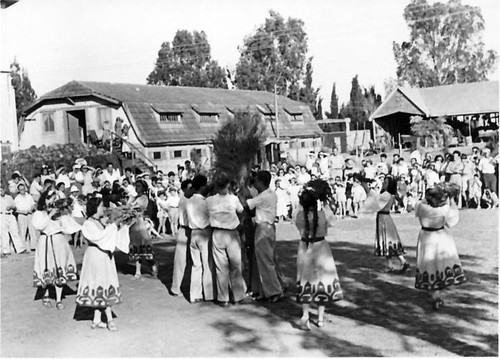 Cultural activity abounds, with films and professional performances presented frequently in kibbutz auditoriums, in addition to closed-circuit television several hours daily, offering programs geared to the interests and tastes of the members. Pooling the talents of kibbutz members all over the country, the kibbutz movements sponsor a number of professional groups, including a symphony orchestra, chamber ensembles, modern and folk dance troupes, choirs and a theater company, which perform regularly in Israel and abroad.
Cultural activity abounds, with films and professional performances presented frequently in kibbutz auditoriums, in addition to closed-circuit television several hours daily, offering programs geared to the interests and tastes of the members. Pooling the talents of kibbutz members all over the country, the kibbutz movements sponsor a number of professional groups, including a symphony orchestra, chamber ensembles, modern and folk dance troupes, choirs and a theater company, which perform regularly in Israel and abroad.
Museums which specialize in subjects such as archaeology, nature, art, Jewish history and the development of the land of Israel have been established by some kibbutzim, attracting members and visitors in large numbers.
Future
The kibbutz is a social and economic achievement that grew out of a pioneering society, prospered along with a rapidly expanding economy and distinguished itself with its contribution to the establishment and development of the state.
Today's kibbutz is the accomplishment of three generations. The founders, motivated by strong convictions and a distinct ideology, forged a society with a unique communal way of life. Their children, born into the kibbutz framework, worked hard to consolidate its economic, social and administrative structures. The present generation, which grew up in an established and prosperous society, is applying its energies and talents to meet the challenges of modern life in the technological age.
Some fear that by adjusting to changing circumstances, the kibbutz is abandoning many of its original principles; others believe that this ability to adapt and compromise is the key to its survival. Whatever lies ahead, as long as the kibbutz maintains its democratic nature, and the spirit of voluntarism, commitment and idealism continues to motivate its members, it will have creative and compelling resources with which to meet the demands of the future.
Tweet
Tweet
Thank YouThank you for visiting our site and hope you will like our jewelry collection: silver jewelry, genuine Roman Glass jewelry, silver and gold spinning rings, Hebrew rings, gemstones necklaces and earrings,and much more.We strive to provide you the best customer service, in addition to top of the line quality products. We will be here for you with any question or need. Don't hesitate to contact us. Distributors and ShopsIf you have a shop or are a distributor, or want to sell our jewels and products at parties, working places, fairs - contact us and we will give you all relevant information and support.ShipmentShipping Information: by Registered Post or by EMS - expedited post.Secure PaymentsWe accept Paypal and main credit cards - Visa and Mastercard. You do not need to have a Paypal account in order to pay with your credit card, and you never share your financial information with anybody using PAYPAL SECURE PAYMENT! |
Tweet







